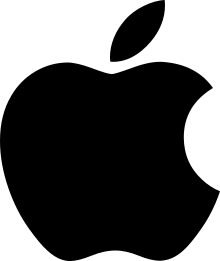Apple Wallet
Apple Wallet (Wallet for short, formerly Apple Passbook) is a mobile app included with the iOS operating system that allows users to store Wallet-passes, meaning coupons, boarding passes, student ID cards, event tickets, movie tickets, public transportation tickets, store cards, and – starting with iOS 8.1 – credit cards, debit cards, prepaid cards, and loyalty cards via Apple Pay.[1][2] It was designed by Apple Inc. and was presented at the 2012 Apple Worldwide Developers Conference (WWDC) on June 11, 2012.[3] The app first appeared on iOS 6 on September 19, 2012. Apple Wallet is also the main interface with Apple Card, Apple's newly announced credit card service.
 The Wallet app in iOS 11, with Apple Pay Cash and cards configured | |
| Other names | Apple Passbook (former name 2012-2015) |
|---|---|
| Developer(s) | Apple Inc. |
| Operating system | iOS & watchOS |
| Service name | Apple Wallet (or Wallet for short) |
| Type | Mobile app |
| Website | developer |
History
Apple Passbook was announced on 11 June 2012.[3] This remained the name of the app for 3 years, 3 months and 5 days until the release of iOS 9 on September 16, 2015,[4] though the announcement that the name would change was made in June 2015 at the WWDC.[5]
Features
Wallet displays Aztec, PDF417, and QR 2D barcodes and Code 128 1D barcodes beginning with iOS 9.[6] Each digital coupon or ticket is known as a "pass".[7] When the user launches Wallet for the first time, a brief introduction screen appears with a button inviting users to browse apps on the App Store with Wallet integration. Passes can also be distributed online via Safari, sent to the user via email, or scanned using the built-in scanner in Wallet.
Passes are synced between iOS devices using iCloud, and OS X 10.8.2 and later also support opening passes to be sent to users' iOS devices. Although the app is available in iOS 6 or later, it is only available on iPhone and iPod Touch, but not on iPad.[8]
Wallet has the following features:
- Displays 2D barcodes of following types: Aztec, PDF417 and QR.
- Displays 1D barcodes of following types: Code 128 beginning with iOS 9.
- Triggered by location. Up to 10 locations can be added to each Pass. A location is programmed as GPS coordinates (longitude, latitude, and altitude) and/or iBeacon UUID. (The UUID is a Universally Unique Identifier which is a 32 ASCII character code or a code automatically generated from a name using the PassKit API.)
- Triggered by time of pass.
- Localisation of the pass. Up to 35 languages can be stored for each pass in Wallet.[9]
- Pass changes can be pushed via the Apple Push Notification Service by the pass provider, or manually updated by the user themselves.
Several third party developers have created similar apps for other operating systems, such as Pass2U Wallet or PassWallet for Android and BlackBerry, that support importing and viewing Wallet passes. Windows Phone 8.1 also[10] supports Apple's pass format as well, although dynamic updates are not supported. Some issuers[11] of passes also support viewing the passes through any web browser.
Ecosystem

Passes exist in a larger ecosystem, because passes are created as a package. The package is a pass template, that is created with a pass signer, along with relevant data and a private key. Passes can be updated at any time using the PassKit API and an iOS app can interact directly with passes stored in Wallet.
Passes are presented and managed by Wallet. Systems and apps interact with passes via the PassKit API.[12]
In its simplest form, an interaction (or transaction) between a pass and a system is facilitated by a 2D Barcode or the modern QR code although it requires the customer to initiate the activity.

In late 2014, the first known implementations utilizing the iBeacon wireless geofencing started to appear in retail locations in the US. The iBeacon solutions allowed the retailer to broadcast an unsolicited lock-screen notice onto smartphones within Bluetooth range.[13]
In 2015, Apple incorporated the ability to present a loyalty card in Wallet to a point-of-sale terminal via NFC.[14] Walgreens enabled this first with their Balance Rewards loyalty program; customers can add their card to Wallet through the Walgreens or Duane Reade mobile apps and tap their phone to the terminal when prompted for their rewards card.
Distribution
Passes can be distributed via email, SMS, MMS, social media, an app, and as QR codes.[15]
References
- https://developer.apple.com/passbook/
- "Use Wallet on your iPhone or iPod touch - Apple Support". Apple Support. Apple Inc. October 6, 2018. Retrieved October 6, 2018.
- Trew, James (June 11, 2012). "Apple unveils iOS 6 at WWDC, launch apps with Siri, Facebook integration, Maps". Engadget. AOL. Retrieved September 22, 2012.
- Brandom, Russell (September 9, 2015). "iOS 9 will be released on September 16th". The Verge. Vox Media. Archived from the original on October 25, 2016. Retrieved November 10, 2016.
- https://www.macworld.com/article/2932541/apple-replaces-passbook-with-wallet-as-apple-pay-expands-to-u-k.html
- What's new in Passbook with iOS 9
- "Apple Passbook and its potential impact on the travel industry". Phocuswire. June 19, 2012.
- "iOS What's New: Passbook". Apple Inc. Retrieved September 26, 2012.
- "PassLocales". Archived from the original on August 10, 2014.
- http://www.imore.com/windows-phone-81-somehow-working-apple-passbook
- New version of PassSource.com offers web views of passes
- PassKit
- "Beacon marketers have new ways around app download requirement - Marketing Land". Marketing Land. April 19, 2016. Retrieved April 16, 2018.
- Caldwell, Serenity. "How to use rewards cards with Apple Pay and the Wallet app". iMore. Retrieved April 16, 2018.
- "Getting Started with Passbook" (PDF). Apple Inc.
